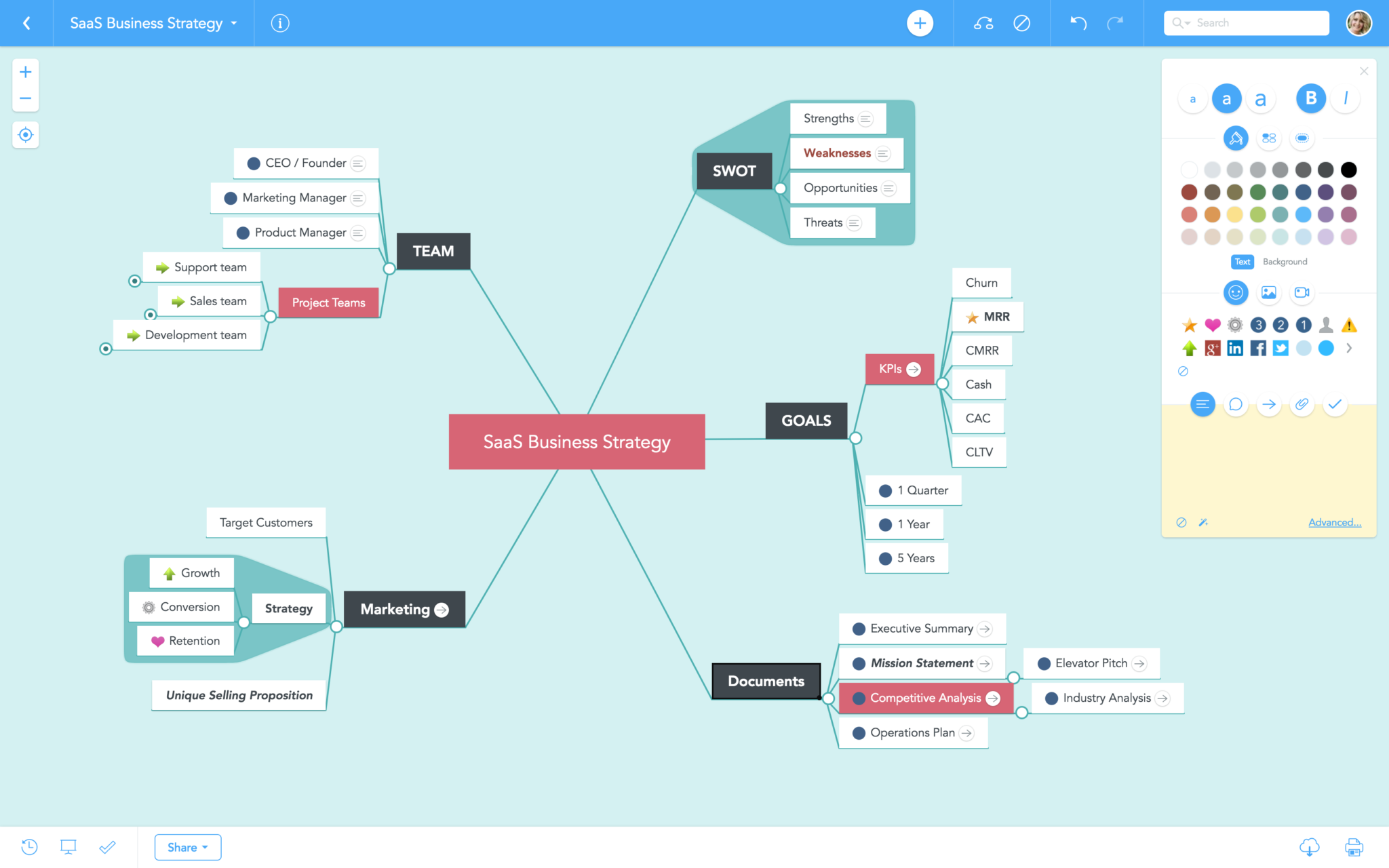

Interpret information presented visually, orally, or quantitatively (e.g., in charts, graphs, diagrams, time lines, animations, or interactive elements on Web pages) and explain how the information contributes to an understanding of the text in which it appears.ĭraw on information from multiple print or digital sources, demonstrating the ability to locate an answer to a question quickly or to solve a problem efficiently.
#Freemind mindmeister free
The free Basic plan allows you to create three maps, and an Edu Campus plan for schools and universities is reasonably priced.
#Freemind mindmeister professional
Digging deeper, there's a huge library of (Google-based) public maps you can browse for ideas and interesting information, professional video tutorials, and a list of keyboard shortcuts for aspiring power users. Saving in MindMeister is completely automated. Presentations that capture map sections are super easy to create and show, and replaying the creation process or restoring older versions is possible using the revert function.

Sharing and chatting on the workspace screen with team members is a snap via email address invitation. You can also associate tasks, icons, due dates, team assignments, and email reminders with any node. In the workspace, you can choose a main theme, then create child or sibling nodes and add notes, images, icons, links, attachments, and formatting. Its dashboard immediately catalyzes creativity with premade sample mind maps and templates that range from basic brainstorming, to-do lists, and pre-writing to SWOT analysis, website planning, and meeting notes. MindMeister is a mind-mapping website (and app) with some added bonus features. Screenshots and embedded links to resources within the blog entries further support the ideas presented in the blog entries. You could use the site as an assessment strategy, especially to gauge student understanding of overarching concepts. Mind maps could also be used to analyze literature, brainstorm creative pre-writing, summarize informational texts, and take notes on lectures or documentary videos. For group projects, students could create a map adding research notes, sources, or email links to interview subjects, chat in pairs or groups right on the workspace, and then turn the results into a final presentation. A semester outline/curriculum overview could be shared and presented in the first week of school, displaying topics to be covered, exam dates, learning goals, and assignments, not to mention modeling one way to use the software. Kids with editing rights could ask and answer questions directly on the map, creating de facto FAQs or a support thread. The entries under the Education tab of the MindMeister blog give a nice set of ideas for using mind maps in the classroom.

Workshops for Families with Kids Age 0–8.Digital Citizenship Resources for Families.Earn a badge of recognition for teaching digital citizenship.Join our next professional learning webinar or workshop.Educators Are Scrambling to Comply with FERPA Amid the Pandemic.New! SEL in Digital Life Resource Center.


 0 kommentar(er)
0 kommentar(er)
